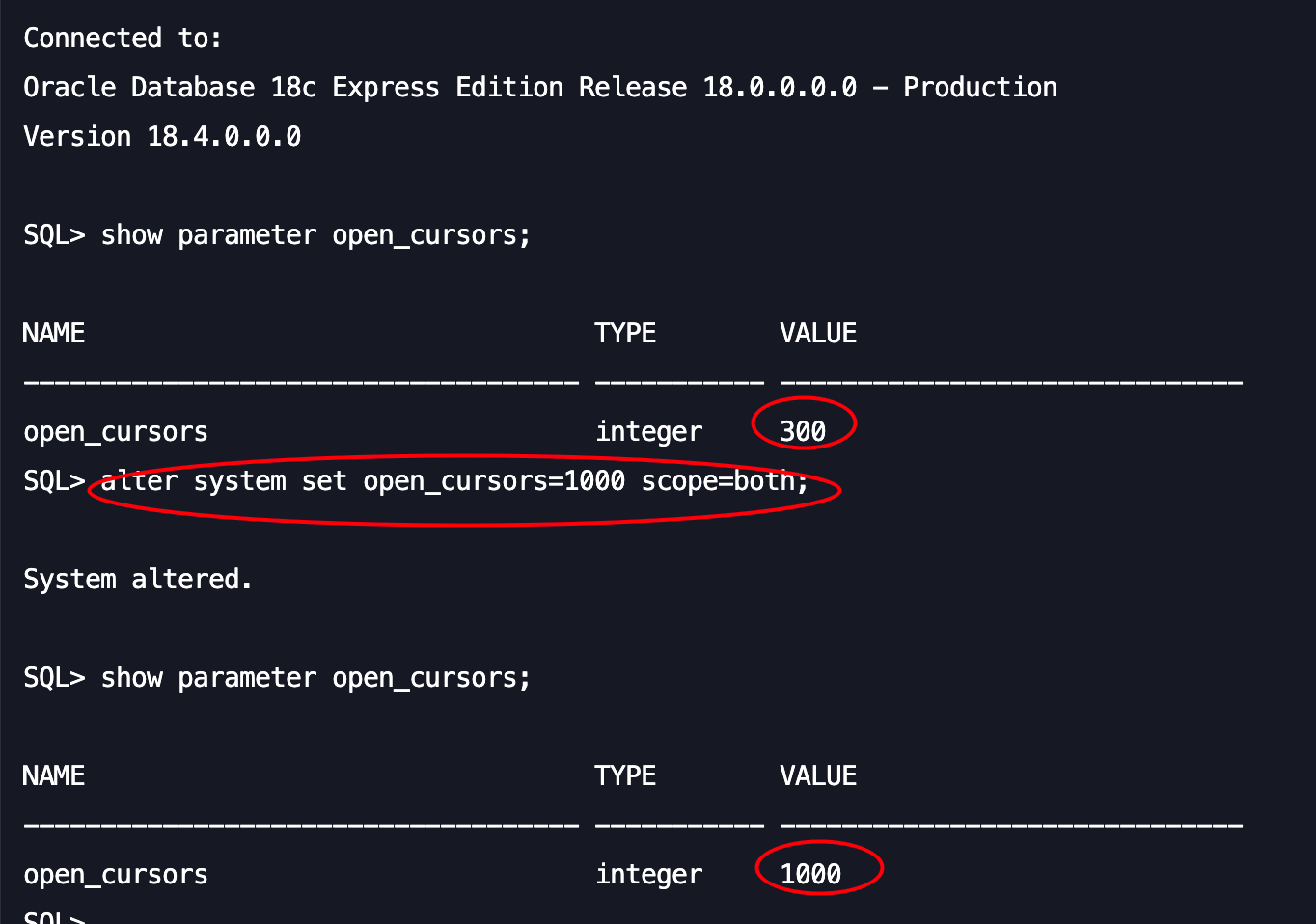Not all schema exported from Oracle¶
If you are Oracle user, you may find some schema are absent in the exported result. In such case, please try to check the errorMessages block in the metadata.json to see whether there's a ORA-01000 error.
1 | |
This issue is caused by the open_cursors in Oracle. Oracle docs note this about ORA-01000:
ORA-01000 maximum open cursors exceeded
Cause: A host language program attempted to open too many cursors. The initialization parameter OPEN_CURSORS determines the maximum number of cursors per user.
Action: Modify the program to use fewer cursors. If this error occurs often, shut down Oracle, increase the value of OPEN_CURSORS, and then restart Oracle.
It happens when the application attempts to open more ResultSets than there are configured cursors on a database instance. Alter the open_cursors value to fix this issue:
1 | |
Check the open_cursors value with:
1 | |
